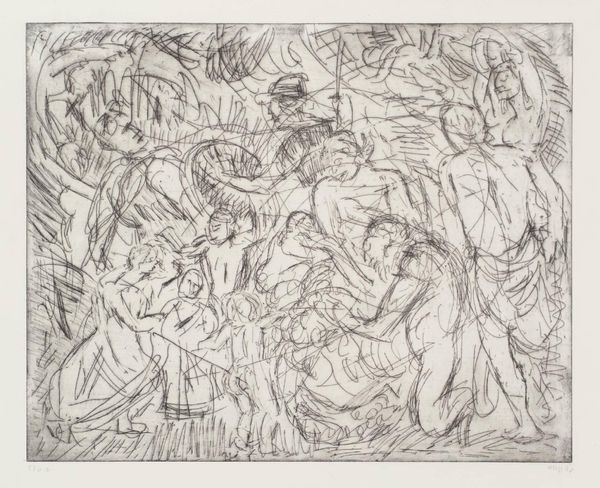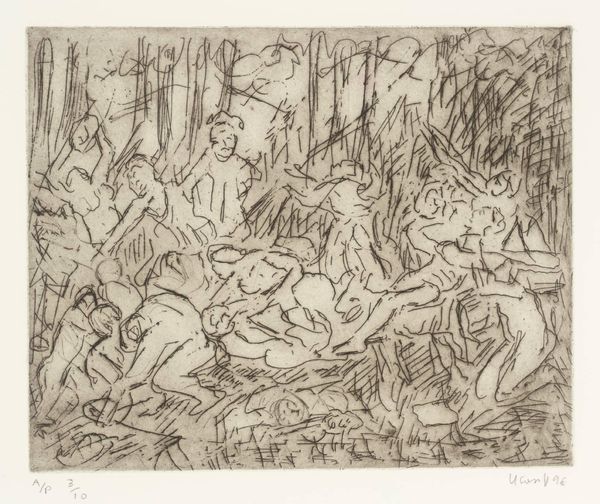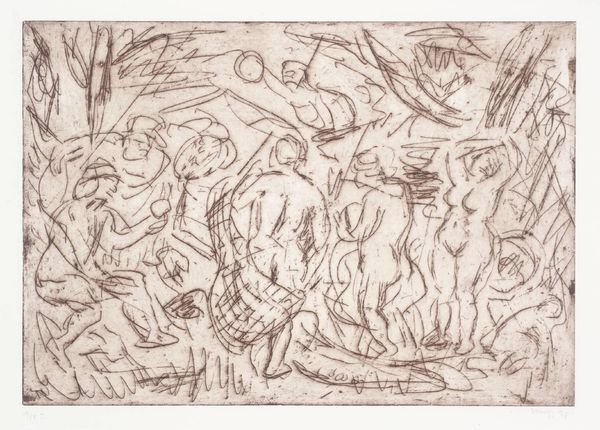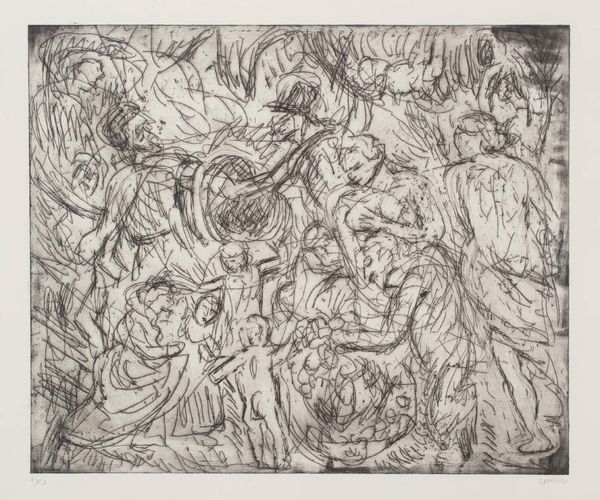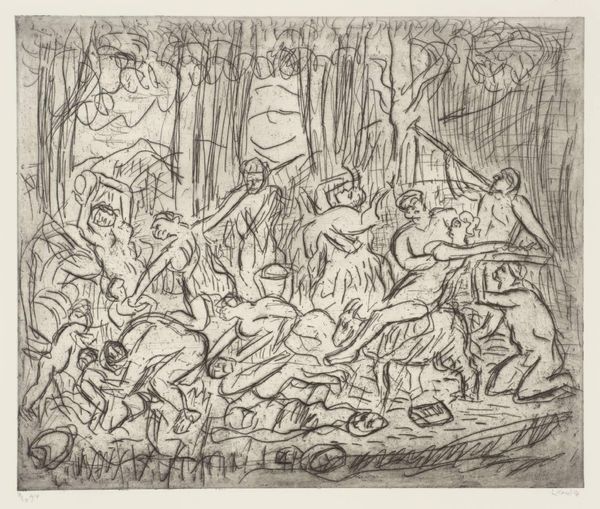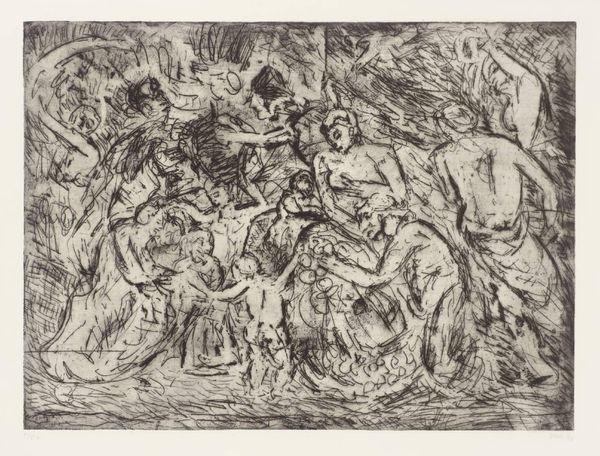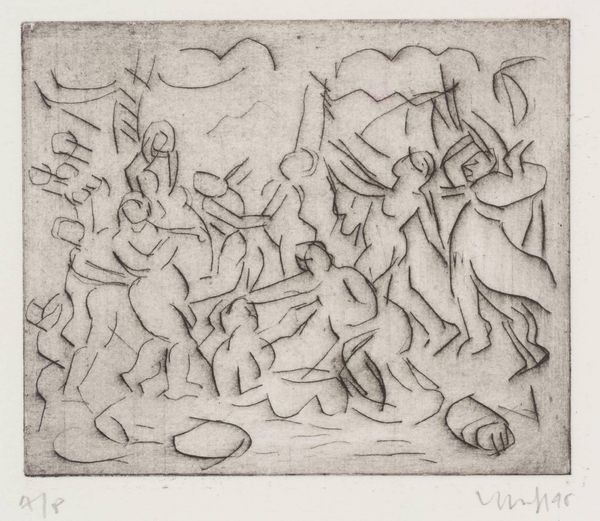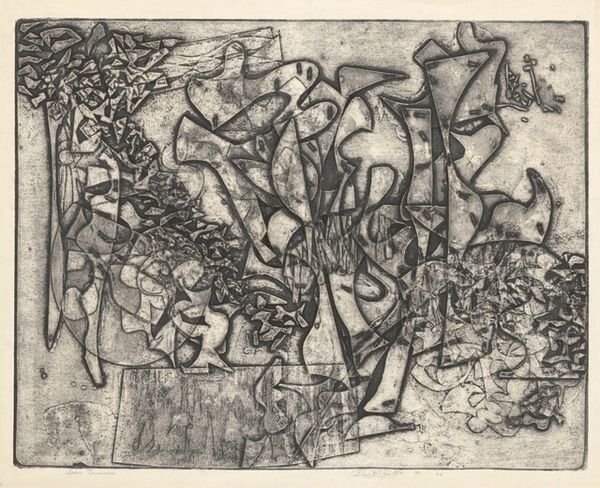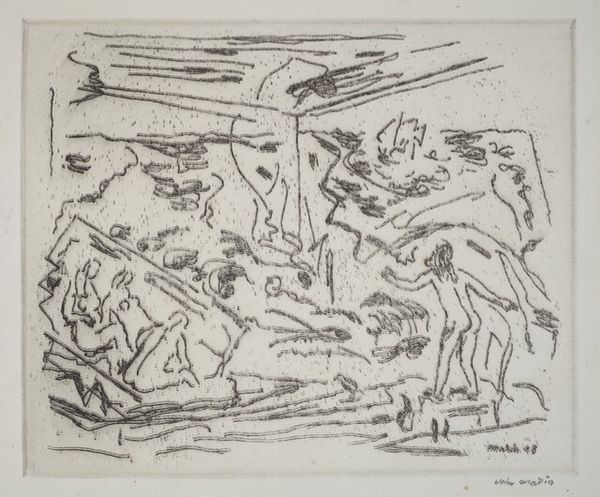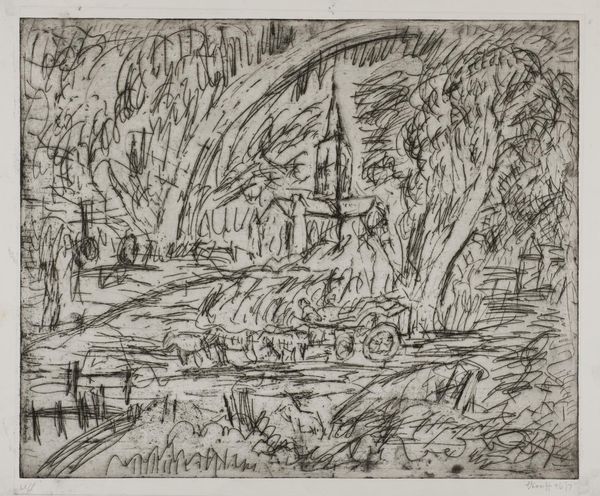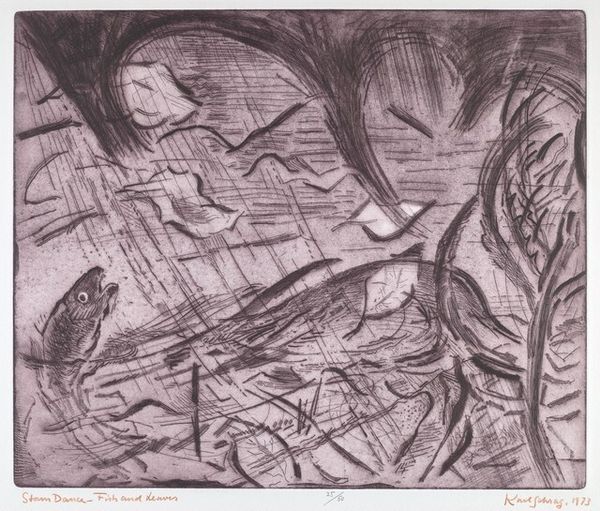
Copyright: © Leon Kossoff | CC-BY-NC-ND 4.0 DEED, Photo: Tate
Curator: This etching is titled "The Triumph of Pan (2)" by Leon Kossoff, an artist born in London in 1926. Editor: It feels chaotic, doesn’t it? The lines are so dense, almost frantic, creating a sense of overwhelming energy. Curator: Kossoff often explored classical themes through a distinctly modern lens. "The Triumph of Pan," in particular, might be seen as a commentary on the complex relationship between human beings and nature, and our attempts to control it. Editor: The etching technique itself, with its network of lines, mirrors that struggle. The forms are barely contained within their outlines. It's as if the figures are dissolving back into the landscape. Curator: Indeed, perhaps Kossoff suggests that our triumphs are always fleeting, and that nature inevitably reclaims its space. Editor: A return to the wild, perhaps? A reminder that order is always on the verge of collapsing back into chaos. Curator: Precisely, the artist’s raw, expressive style perfectly encapsulates that tension. Editor: It certainly leaves you pondering the impermanence of things.
Comments
tate 8 months ago
⋮
http://www.tate.org.uk/art/artworks/kossoff-the-triumph-of-pan-2-p11731
Join the conversation
Join millions of artists and users on Artera today and experience the ultimate creative platform.
tate 8 months ago
⋮
This print is one of many etchings executed by Leon Kossoff in response to, and literally in the presence of, oil paintings by old masters; in this case The Triumph of Pan, 1635-6, by Nicolas Poussin (1594-1665), owned by the National Gallery, London. Tate owns four prints by Kossoff after this Poussin painting (Tate P11730-3) as well as two prints after a preparatory drawing by Poussin for the same painting (Tate P11734-5). Kossoff’s ability to explore a number of separate responses while making drawings and prints from a single subject is illustrated in these etchings. This version was printed in an edition of twenty with ten artist’s proofs; Tate owns number three of the artist’s proofs.
